
Mixed media artist Valerie Wilcox works with common, salvaged materials creating what she calls “connections between our everyday lives and ideas about how we construct our physical and psychological space. I like to push the surreal with ambiguous shapes that hover between a two-dimensional plane and a three-dimensional structure.”

Her dimensional works play with space and perception, using the effects of light and shadow. She turns the objects with which she shapes her work into canvasses of sorts, emphasizing the materials as well as the painted and textured surfaces she creates.
“I form these hybrid dimensional constructions/paintings using discards, found elements and humble materials. Ideals of perfection versus inherent human fallibility are fundamental in my work. I embrace the mistakes,” she says.
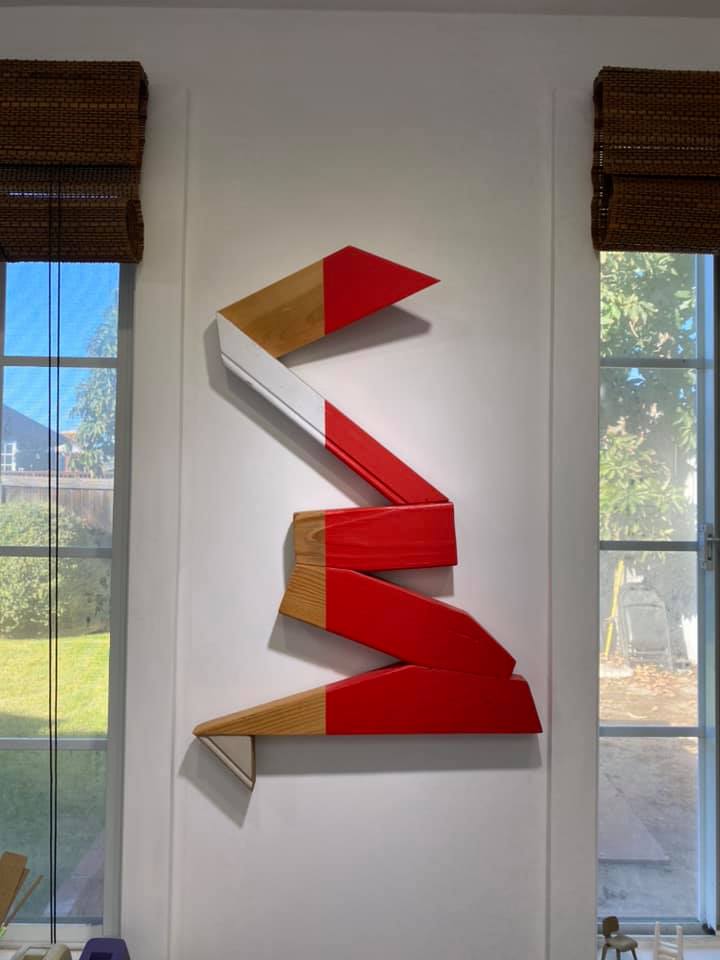
Following the ideology of Wabi Sabi and the acceptance and beauty of transience and imperfection, she rejoices in the anomalies arising from the process of construction, she relates, saying they add elegance to the final work.

Wilcox says she is always experimenting with different materials throughout Constructs, her continuing body of work, enjoying the freedom to explore a wide variety of materials. “I started working with found discards and humble materials when I found myself with a lot of remnants leftover from my design work and previous projects. I was looking for the opportunity and resources to develop more sculptural 3D compositions while still working as a painter.” She adds “This way of working continually opens up new possibilities…Starting with the materials becomes e a meditation on form and shape. It’s like working with puzzle pieces that don’t fit together, but at some point, they make themselves awkwardly happy collaborators.”
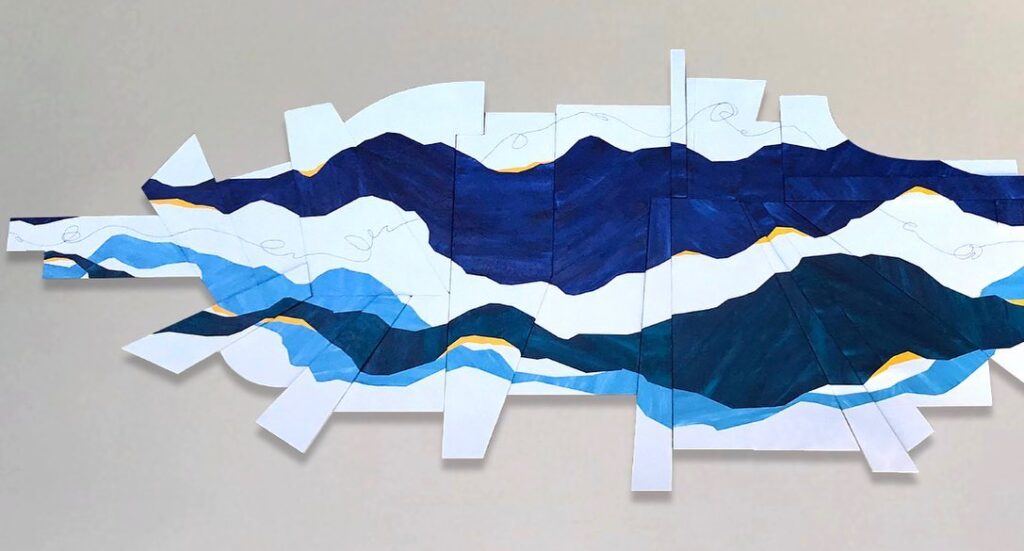
Wilcox used these techniques in creating a vast commissioned piece, “A Bridge to Possibilities II.”
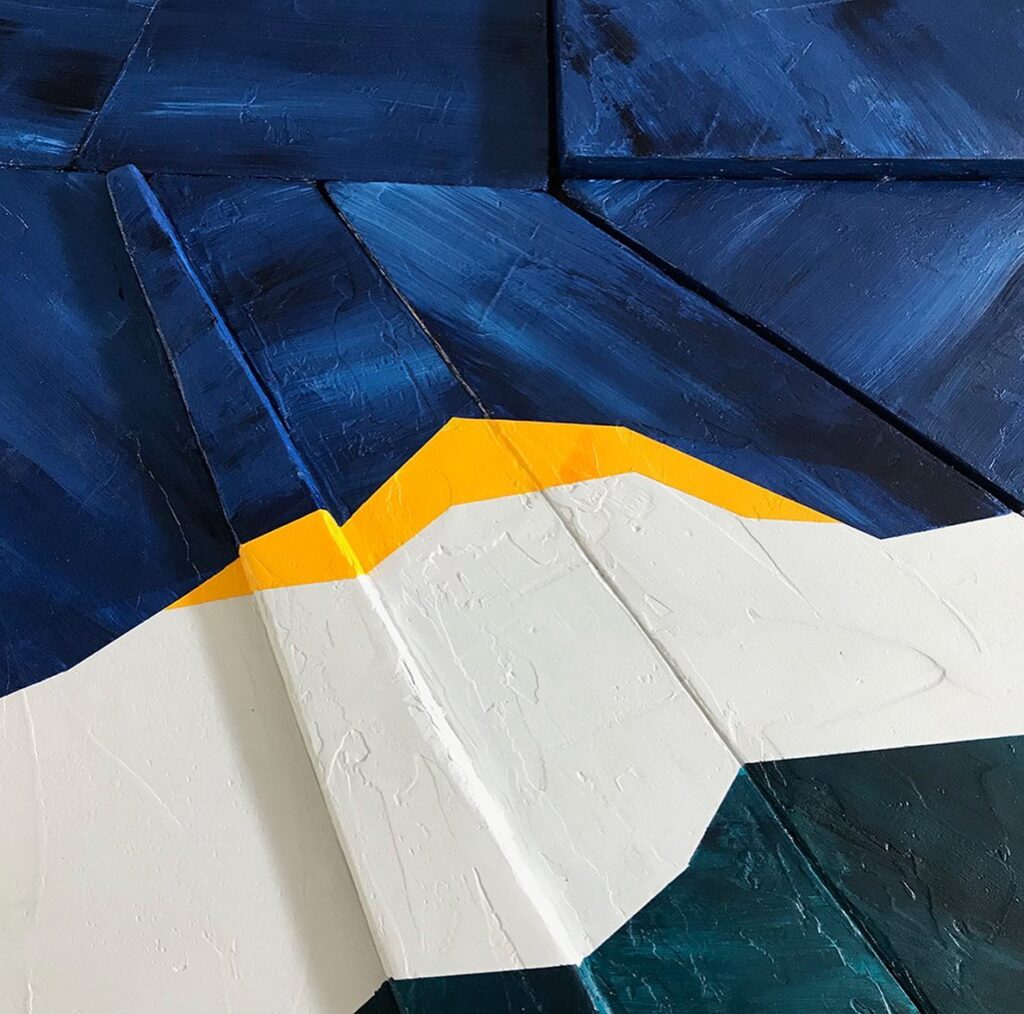
Creating the work, she employed her usual process, with one large difference involved: she had to start from scratch with the pieces she used to create it, as she had no scrap to work with and she needed to do specific design sketches for approvals, and pieces cut to fit the layout.
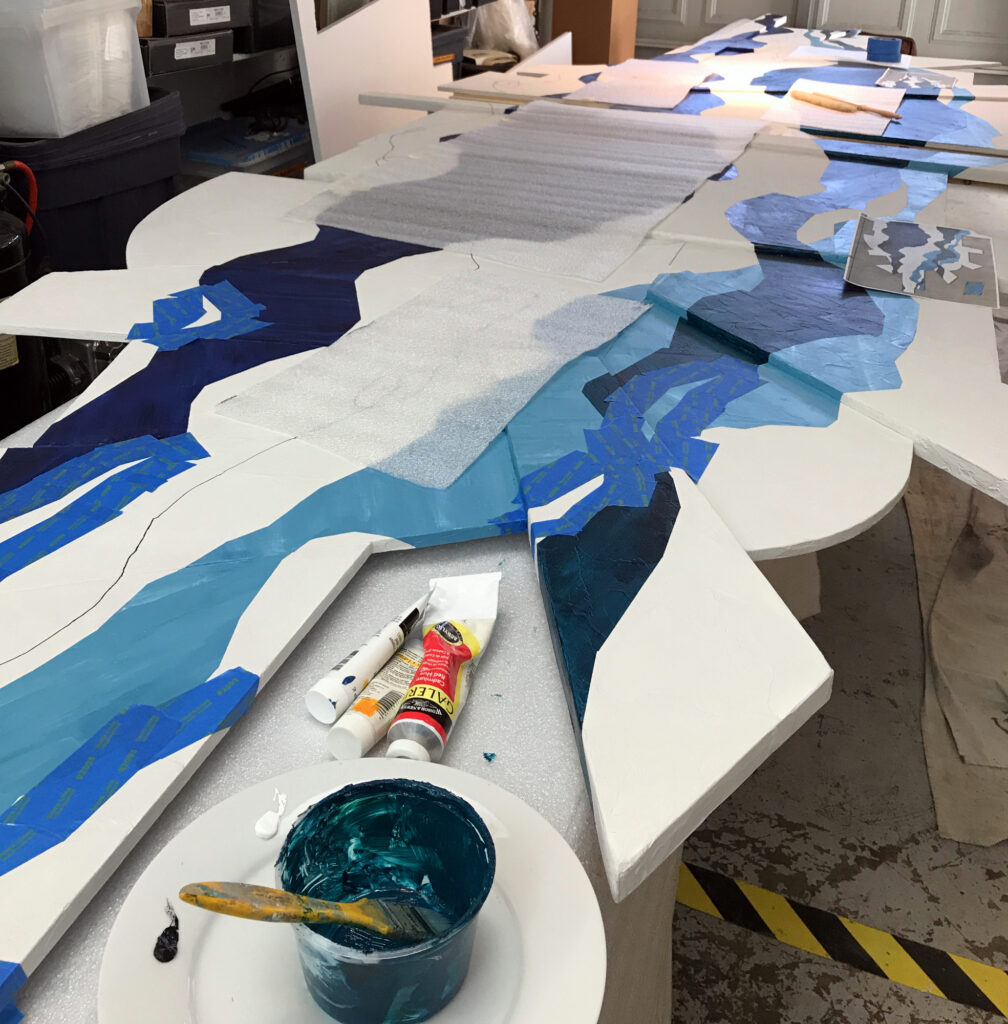
“This is not how I normally work,” Wilcox attests. “I’m very process oriented and usually start from the inspiration that the materials provide me, not from a pre-ordained design.”
The biggest challenge however was creating an extremely large work in her studio space. “The sculpture was made with 26 individual pieces combined to make the finished size of about 6 ft x 17 ft. I made it in 4 sections so it could be easier to transport and install.”

Because her studio isn’t large enough to work on all the pieces together, she purchased three 6 ft. tables and set them up in her home’s tandem garage. Using this system, she could paint the work all together when laid out flat.
According to the artist, “It was a new challenge for me to work this large, however, because of the way I work in general, which is to work on the separate pieces first and then combine them together, I was able to work like a production line and prepare the individual pieces separately in my studio and in the garage. In order to see how the piece was working and provide progress photos to the client, I had to lay it out in our driveway and shoot it from our rooftop to get it all in one photo.” Next time, perhaps, a drone.
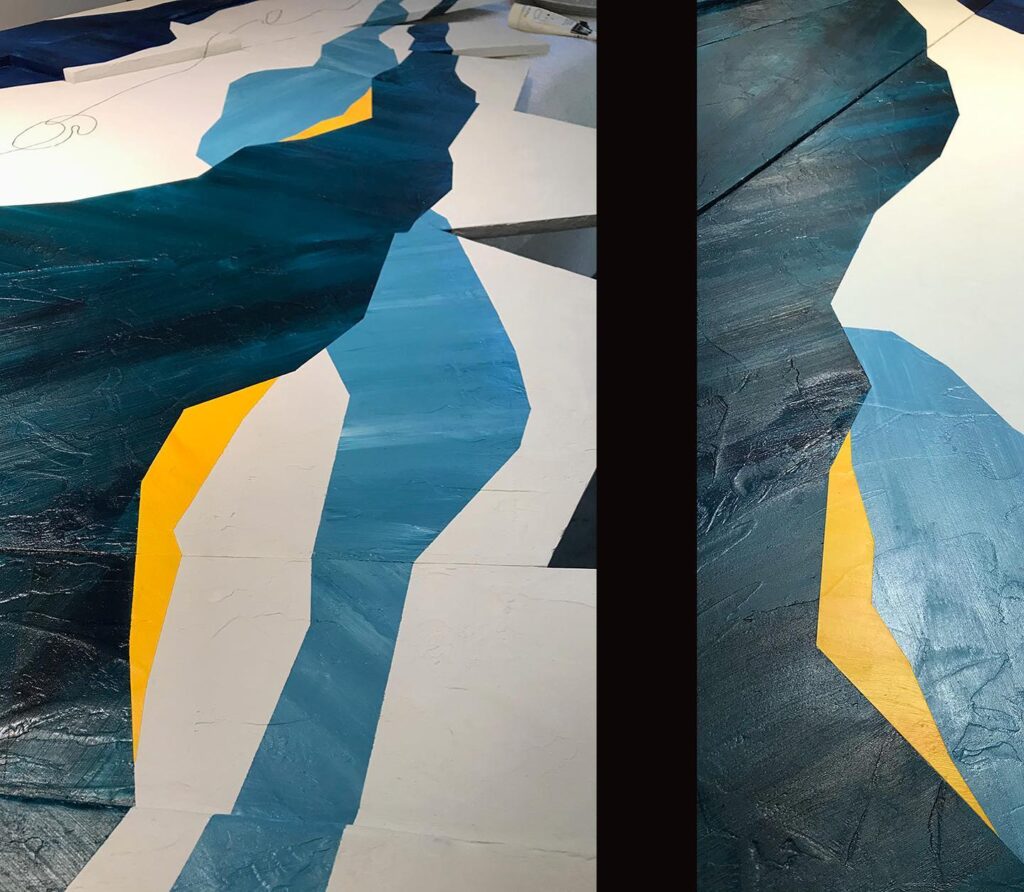
While many of the techniques she used to create the work remained consistent with her work on other pieces, in this case she used a stronger but just as lightweight material called Gator Board to make the work easier to install.
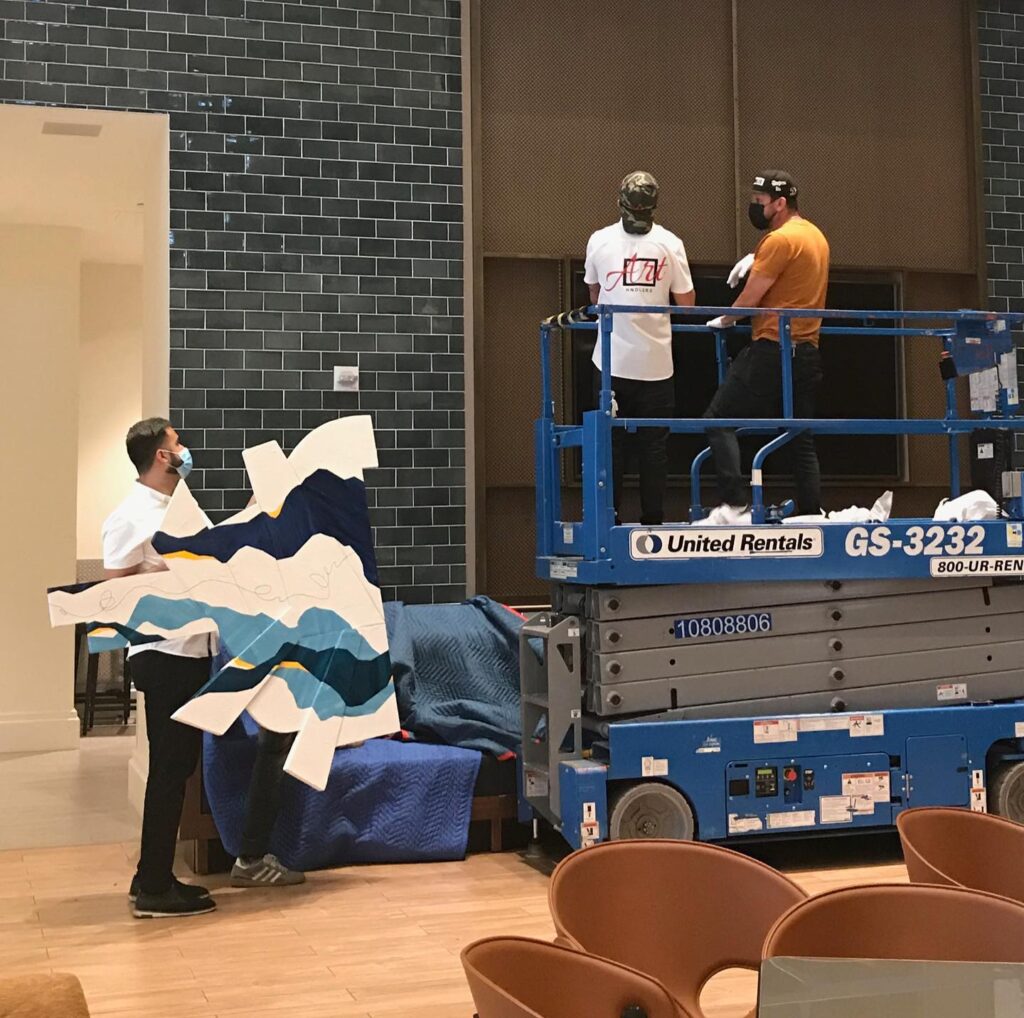
“I also worked with a fabricator to create a wood cleat system on the back for hanging. They did the installation using a matching cleat system on the wall. This was hung in 4 sections that fit into each other like puzzle pieces,” she says.

The piece was commissioned through an art consultancy formed hired by a New York-based designed firm that renovated the hotel. The team liked Wilcox’ original “A Bridge to Possibilities,” and sough a larger iteration of it that used colors fitting well with their interior design.
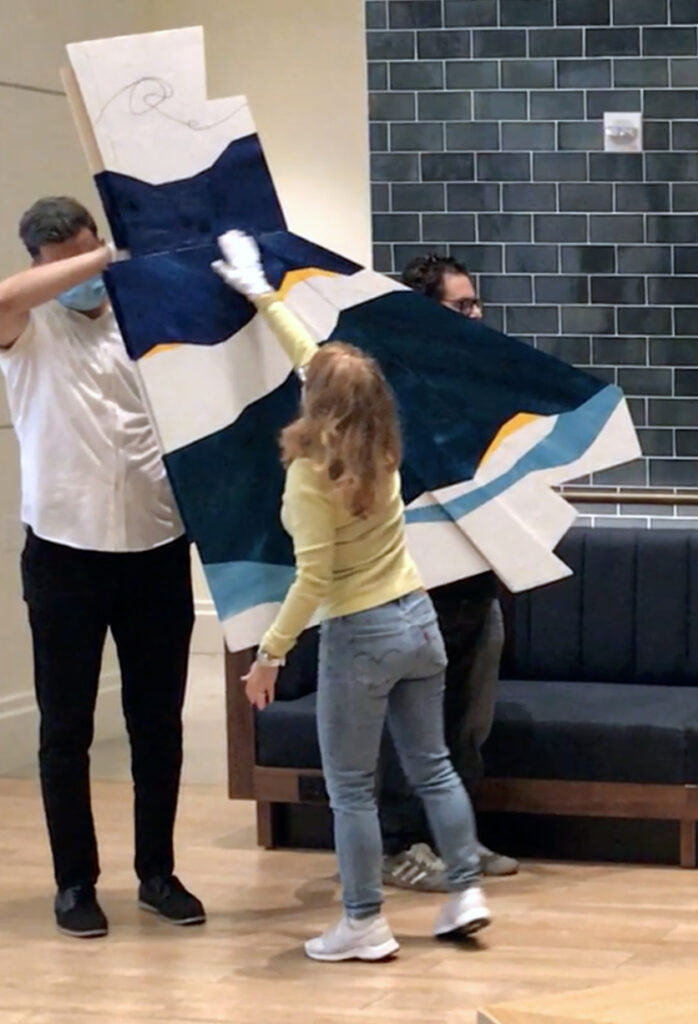
The piece will have to wait for the pandemic to – finally – end to find its audience. It was commissioned by the Manchester Grand Hyatt San Diego, located in the downtown San Diego harbor area, and it’s installed in the main bar. The bar is of course closed until restrictions are lifted.
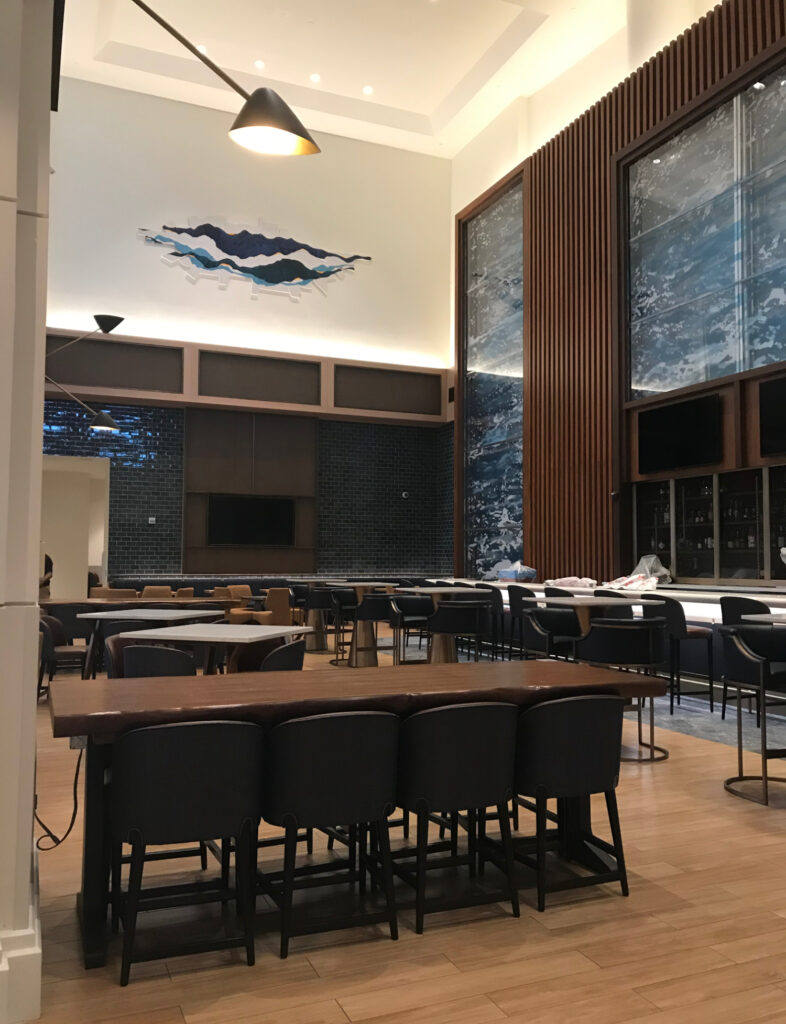
That makes Wilcox’ large and lovely artwork another gem to look forward to experiencing in the coming new year. It will be a “Bridge to Possibilities II” indeed, for most of us.
- Genie Davis; photos, Genie Davis and courtesy of the artist


